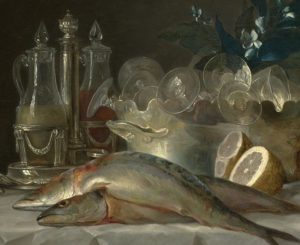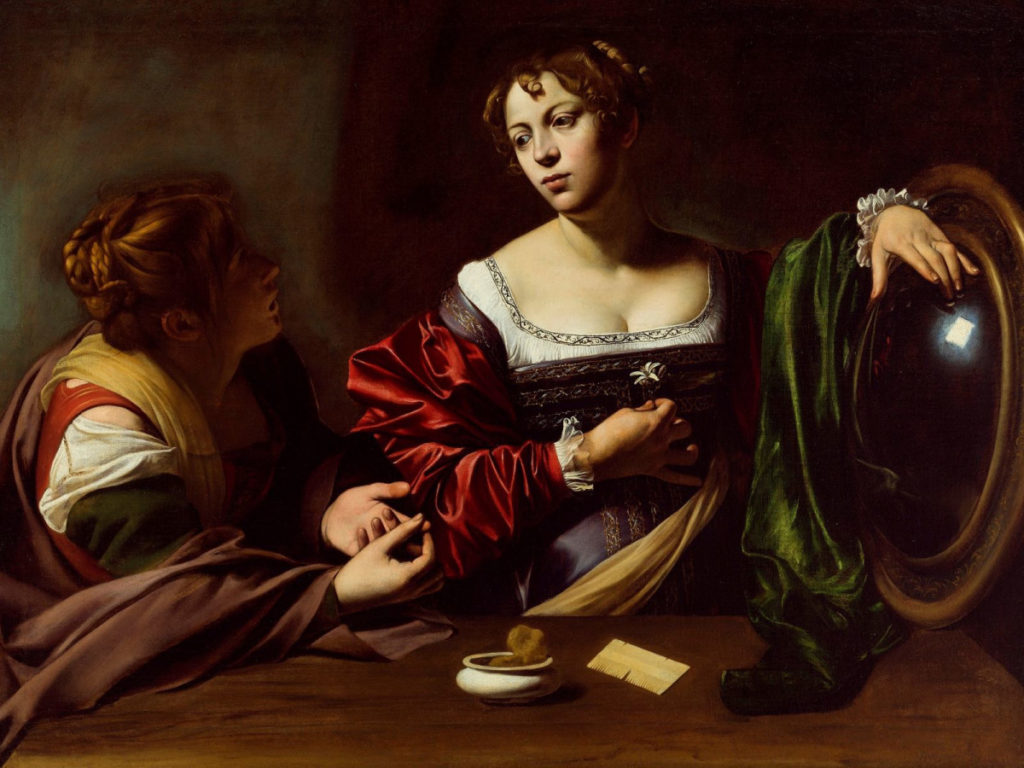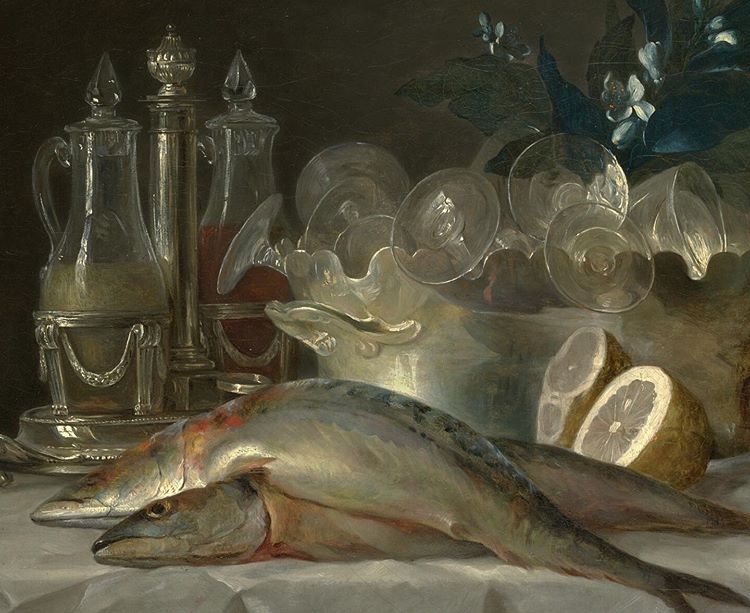Masterpiece Disrupted — With Women Artists Snubbed for Too Long, Institutions Look to Right Sins of the Past
The Art World's Most Weighty Word Gets a New Examination
BY Billy Fong // 09.14.19Michelangelo Merisi da Caravaggio, "Martha and Mary Magdalene," c. 1598, oil and tempera on canvas, Detroit Institute of Arts, Gift of the Kresge Foundation and Mrs. Edsel B. Ford.
The word “masterpiece” carries substantial weight. No term confers greater credibility when it comes to art, literature, film, music, architecture, even technology. Throwing the term into a marketing strategy is often all one needs to create a blockbuster.
Yet the foundation of the word, “master,” ultimately denotes the masculine – and the definition of masterpiece often makes reference to “outstanding craftsmanship.” All roads within this word seem to point to the male gender.
Over the past few years, undoubtedly due to the current wave of new feminism and the women’s equality movement, the art world has expressed renewed interest in conversations surrounding female artists, whether known yet under-recognized or previously undiscovered. Museums have embraced this urgency, consciously organizing exhibitions featuring women artists. But in marketing these female-centric shows, where lies the word masterpiece?
Even today, it’s rarely found when describing the work of female artists. The notion of what defines a masterpiece and the era of #MeToo are set on a collision course. Art world insiders are abuzz that institutions as well as the art market are finally compensating for the omissions of the past.
But the question remains: Is anyone confident enough to proclaim works by the new canon of great women artists as masterpieces? And furthermore, what truly makes a masterpiece – made by man or woman – worthy of our utmost attention and praise?
All of this came to mind while examining the promotion of the Dallas Museum of Art’s new exhibition of a work by Michelangelo Merisi da Caravaggio. The press release reads: “Dallas Museum of Art presents a rare opportunity to see a masterpiece by Caravaggio.” It declares the single work on display, Martha and Mary Magdalene, 1598, a “masterpiece from Caravaggio’s early career in Rome.”
Caravaggio was active in Italy between 1592 and 1610. Most would count him as one of art history’s most important artists, alongside da Vinci, Rembrandt, Vermeer and Michelangelo. Less than a dozen of Caravaggio’s works exist in museum collections in the United States, adding to the allure of the great master — and this exhibition, in particular.
The show focuses on a single painting by Caravaggio, and it’s the first exhibition led by the DMA’s new assistant curator of European Art, Julien Domercq, who joined the museum this spring from the National Gallery in London. Entering a hushed, darkly painted gallery at the DMA, the dimly lit masterpiece hangs in what feels like a sacred space.
The 16th-century painting looms, depicting the parable of Mary Magdalene – who the Catholic Church had long considered a prostitute – undergoing a spiritual epiphany as her sister, Martha, counts the reasons for Mary converting on her fingers.
Being in the presence of Martha and Mary Magdalene recalls the solitude of a religious sanctuary. Museum guests appear in a trance-like state, and any speaking is done in a hushed tone.
Are we waiting for some kind of spiritual connection? Do we expect a cathartic moment or that a grand awakening will occur in the presence of a masterpiece? A cellphone rings, shattering the silence – nearby guests glower at the phone’s owner. It’s as if someone has spat on the Mona Lisa.
Domercq discusses the criteria defining a masterpiece as it pertains to Caravaggio’s Martha and Mary Magdalene. Here, it is the artist’s brilliant use of light, he says. Caravaggio was known for his expertise in chiaroscuro, a painting technique that creates theatricality through its strong contrasts of light and dark. In this case, the artist has cast a divine light upon Mary Magdalene, the now reformed sinner.
Domercq also remarks on the painting’s ability to convey an extremely complex story in a particularly subtle and deft manner, another criteria often used among art historians and curators to distinguish a masterpiece.
The Masterpiece Dilemma
Our focus then shifts to the topic of dominant masculinity in the world of known masterpieces. Even the most casual museum-goers, we both agree, would likely only be able to name male artists when questioned about artistic masterpieces. Furthermore, he says, most of the world’s masterpieces would be “works depicting women.”
Da Vinci’s Mona Lisa, Picasso’s Les Demoiselles d’Avignon, Titian’s Venus of Urbino and Rembrandt’s Danaë immediately spring to mind.
“There is a problem that the history of art has been written by men for men,” Domercq says.
Call it an affirmation: When a major museum curator speaks of gender disparity in art, it is a clear signal of the slowly deteriorating notion of artists only being men – and their muses, only women.
Prior to the 20th century, social conditions made it difficult for women – except those few educated females from aristocratic classes – to be allowed to paint or find creative expression in the arts. They were rarely, if ever, allowed to join guilds or academies, which often provided much needed credibility and the platform for an artist to earn a living.
When exploring those works that fall under the category of masterpieces, we are often found looking at images of historic art created hundreds of years ago, during a time when women were not recognized as artists. Without an academic background in art history, one would be hard-pressed to name a female artist from the Renaissance or Baroque eras.
In academia, the word masterpiece is often absent. Southern Methodist University art history professors Anna Lovatt and Amy Freund rarely use the term in their classes. The word often does carry gender connotations, they agree. And moreover, it is often employed as a generic umbrella term by the marketing machines in the private sector of the art world or art museums – all in hopes of drawing record crowds for an exhibition.
They bring up the groundbreaking book Old Mistresses: Women, Art, and Ideology, written by Rozsika Parker and Griselda Pollock in 1981. The authors question the erasure of women from the history of art by 20th-century scholars and academics. Nearly 40 years later, how far have we come in weaving female artists into the complete art-historical narrative?
The Kimbell Weighs In
In conjunction with International Women’s Day this spring, the Kimbell Art Museum unveiled one of its newest acquisitions: Still Life with Mackerel, 1787, by 18th-century French painter Anne Vallayer-Coster. The museum added Still Life with Mackerel to its collection in March, making it only the third work by a female artist in the Kimbell’s permanent collection – a staggering statistic when considering the vast holdings of a museum as reputable as the Kimbell.
Eric Lee, the museum’s director, considers Vallayer-Coster to be the foremost still-life painter of her era – but makes clear that her gender inhibited her rise to notability.
In an interview with KERA’s “Art + Seek” following the acquisition, Lee noted: “After her death, her fame diminished, and during much of the 20th century, she did not have the recognition she had during her lifetime. . .
Prior to the 20th century, you did not have large numbers of women artists. . . Actually, I think we had more women artists than we realized, they just didn’t receive the recognition.”
Despite Vallayer-Coster being one of only four women admitted to the French Royal Academy during the entire 18th century, Lee is fast to mention that art history was still quick to write her out – along with many other major women artists. The solution is in motion.
“We have art history departments, art historians, museums that are looking at overlooked women artists from the past,” Lee says.
This is not a moment to debunk accepted classics – and it is inarguable that Caravaggio’s depiction of the story of Mary and Martha Magdalene is of masterpiece quality. Yet the zeitgeist of modern feminism, #MeToo, and closing the gap of gender disparity has forced us to think deeper, rejecting the notion of taking everything at simple face value.
Can we see past, for example, the murder allegations that haunted Caravaggio late in life – only to see the work for its example of skill and mastery? Should we examine the works of Picasso and Gauguin with a quizzical brow for their notoriously questionable relationships with women? Or, should we look at them strictly for their artistic innovations?
As contemporary so-called masters are concerned, should we disassociate the word masterpiece with an artist such as Chuck Close, who in 2017 was accused of sexual harassment?
And what say the art world of its search for what we will call mistress-pieces: great works of art created by women. An example is set by a museum such as the Kimbell. The museum adds roughly one or two works to its cache every year – all on the hunt to add masterpieces to its prized permanent collection.
When more women artists make up the names of those inducted into a major museum’s repertoire, the hope must be that future generations identify the word masterpiece not just with works made by men, but by others made by women. Will there come a day, one wonders, where a Vallayer-Coster is measured on par with a Caravaggio? Will Still Life with Mackerel be as much a household name as Martha and Mary Magdalene?
A new era is certainly upon us – one where women are no longer objectified in painting and sculpture, as in centuries past, but rather recognized for the masterpieces of their creation that hold solid ground within the canon of art history.
“Caravaggio: Martha and Mary Magdalene” through September 22 at the Dallas Museum of Art, dma.org.
Anne Vallayer-Coster’s “Still Life with Mackarel” is on view at the Kimbell Art Museum, kimbellart.org.





_md.jpg)







